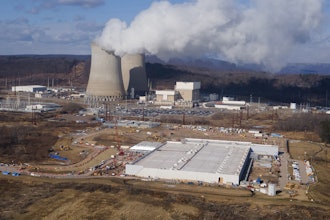
COVID-19 left distributors around the world scrambling to adapt their businesses to numerous challenges, from initial shutdowns and stalled operations to spikes in demand which exposed profound weaknesses in the global supply chain.
Now, another major issue directly related to the supply chain disruption is hitting the industry as distributors are confronting significant labor gaps and difficulty in finding new workers who possess the technical skills increased digitalization within the industry demands.
Distributors certainly aren’t alone in this regard. Numerous businesses have been hard hit by what is being dubbed “The Great Resignation,” a term coined by Texas A&M Professor Anthony Klotz to describe the roughly 33 million Americans who have quit their jobs since spring 2021 due to a variety of reasons, from on-the-job frustrations to more lucrative employment opportunities.
But for distributors, whose relationships with vendors, suppliers, and customers have always been at the heart of their industry, labor shortages and shifting worker preferences are leaving many vulnerable as experienced workers move on, taking with them the knowledge about how work gets done and how that work is linked to the company’s higher-level business objectives. It has also left distributors which lack a well-defined understanding of their business processes struggling to train new employees.
To meet this challenge head-on, many distributors are turning to business process analysis (BPA). At its most basic, BPA provides a structured approach for identifying and analyzing how work is being performed and how the business processes at the foundation of that work can be improved.
Recognizing that the average distributor runs thousands of manual, automated, and outsourced processes over hundreds of systems that don’t necessarily work well with each other, BPA defines, documents, and visualizes all of the business processes currently being executed. This enables a distributor to identify which processes are working well and what needs to be improved by zeroing in on waste, errors, and redundancies which potentially cause inventory issues, shipping delays, and rising costs.
BPA also enables distributors to document all of this information, rather than allowing it to exist only in the minds of the workers and process owners responsible for its implementation. Doing so prevents it from walking out the door if a key employee decides to quit.
With this information in hand, distributors are in a much better position to create and implement a process improvement plan designed to boost process efficiency, align processes with overall business objectives, and generate companywide process consistency and governance. This plan also provides a roadmap for addressing potential labor shortages by identifying those rules-based, repeatable, and error-prone processes which can be automated, freeing employees for higher-value work.
Properly executed, BPA will lead to greater efficiency, improved quality, cost reduction, and better decision-making. It also will help to offset potential labor shortages by automating certain repetitive, rules-based processes, while better accommodating a new breed of employees who demand a flexible working culture that offers more meaningful work and a better work-life balance.
It is important to realize, though, that BPA is not a one-and-done solution. It must be a continuous effort. Once the improved business process has been implemented, regardless of the output, it must be continuously monitored for quality, efficiency, and effectiveness.
Equally important, distributors must recognize that BPA solutions are not all created equal. Some process and task mining solutions, for example, do not allow all of a company’s stakeholders to capture and define how work is being done today. As a result, holistic visibility into an organization’s current state is impossible which, in turn, reduces the likelihood of maximizing cost reductions and efficiency. Other solutions fail to provide any kind of context as to how company processes fit strategically and contribute to higher-level business goals.
Context, in fact, is perhaps the primary pain point companies in a wide range of industries are experiencing today. While most of the process and task mining solutions that are packaged into today’s BPA offerings allow users to identify the steps that are involved in customer onboarding, for example, few are able to provide context as to how that onboarding process fits into the entire customer journey. As a result, users are unable to evaluate related processes, such as ongoing customer relations, customer retention efforts, and customer attrition, and make improvements that will impact the entire spectrum of customer-related activities. The same holds true for other processes, such as billing or regulatory compliance.
This suggests that contextual capabilities are likely to be incorporated into future iterations of BPA. Doing so will enable BPA solutions to provide far greater contextual information for everything from human resources management to marketing and sales. This, in turn, will allow distributors to have far greater insight into how current processes fit into their overarching business objectives and how those processes can continually be improved to drive greater efficiencies and reduce costs.
Bottom line, BPA as a segment of the enterprise software market seems destined to continue to grow in the future. The challenges industrial distributors have encountered over the past two years have reinforced the need to understand current-state processes in order to enable greater agility, resilience, and adaptability moving forward. And now with labor shortages and shifts showing extreme volatility, that need has accelerated.
Given that, distributors would be well-advised to filter through the noise surrounding BPA to find the solution that will deliver both best-of-breed and innovative capabilities, with a promising roadmap that will keep them ahead of the curve as new BPA applications and technology advancements emerge.
 Tony Higgins
Tony Higgins























